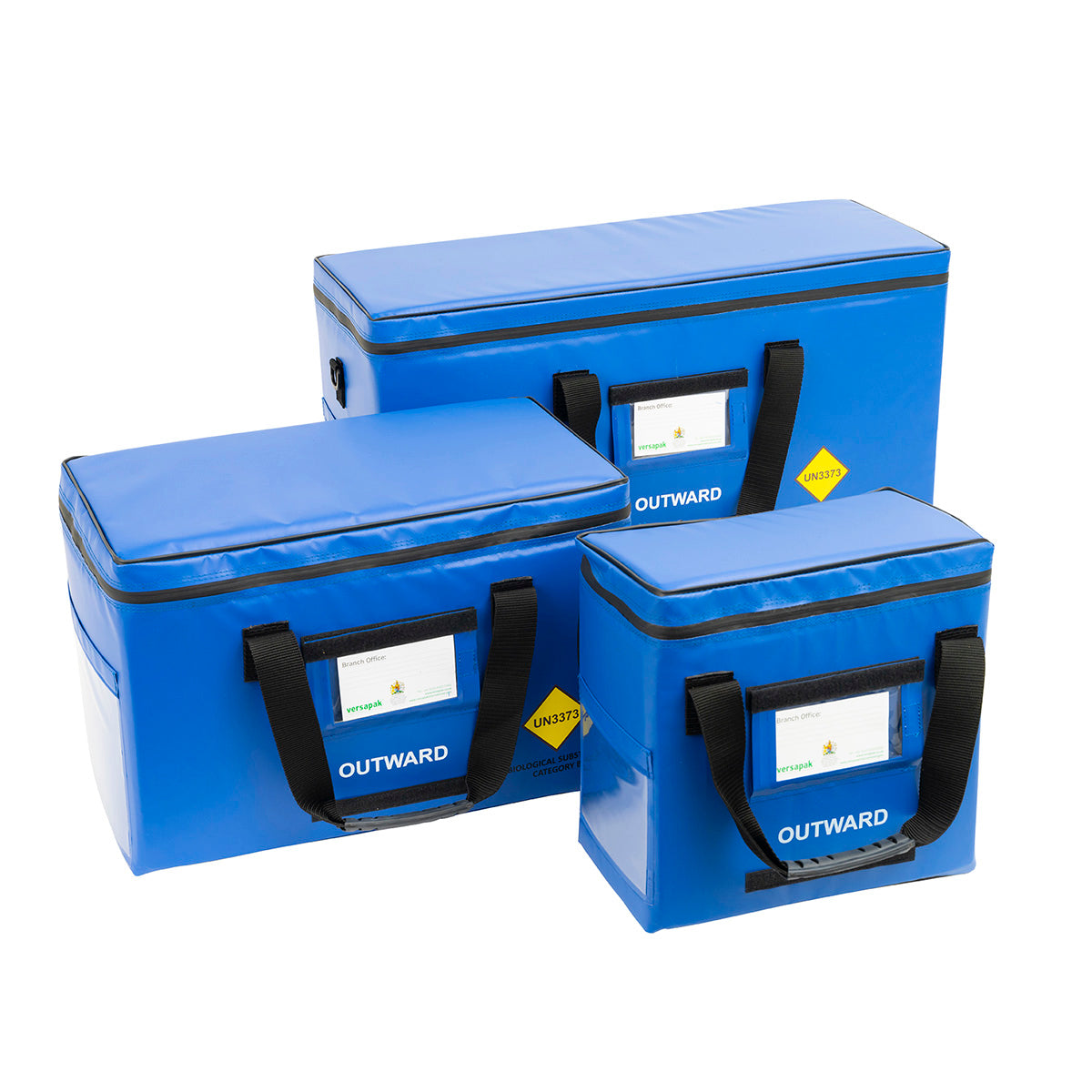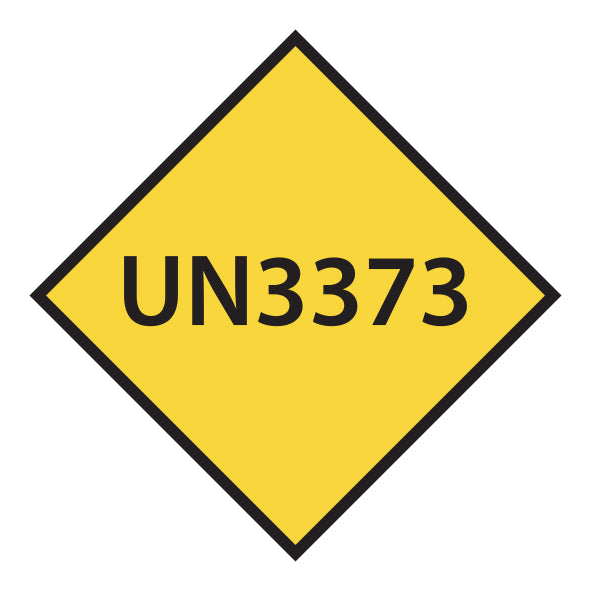
The transport of human or animal materials intended for diagnosis or investigation is regulated by ADR, a UN document which defines how such substances should be classified, packaged and transported.
Are you transporting diagnostic substances safely and legally?
UN guidelines specify how substances should be classified, and how these substances should be packaged for transport. According to these guidelines, biological substances classified as UN3373 category b should be packaged and transported in line with Packaging Instruction P650.
What is UN3373?
When deciding how to prepare dangerous goods for transport, the first step is to decide which UN number the dangerous goods belong to.
There are four UN numbers that are used for the purposes of classifying infectious or biological substances:
UN2814 – Infectious substances affecting humans
UN2900 – Infectious substances affecting animals
UN3291 – Clinical waste
UN3373 – Diagnostic substances
In the UK, the Health & Safety Executive defines Diagnostic Substances as follows:
"Diagnostic substances, assigned to UN3373 category b, are human or animal materials that are being transported only for the purpose of diagnosis or investigation. Such materials include excreta, blood and its components, as well as other tissues and fluids. Diagnostic substances do not include live infected animals.
If the source (the patient) is known to have a serious disease that can be readily transmitted and for which effective treatment and preventative measures are not usually available, then the substance must be assigned UN 2814 or UN 2900, as appropriate."
Definitions of the other UN categories can be found on the HSE Website.
Although known as Diagnostic Substances, the proper shipping name of substances classified as UN3373 are “Biological Substance, Category B”.
UN3373 Medical Carriers




What is P650?
If a diagnostic substance has been classified as belonging to UN3373, then it must be packed for transport according to a set of guidelines known as P650, or Packing Instruction 650. This is a list of requirements covering the quality and construction of the packaging used for transport.
Packing Instruction 650 is defined by ADR, the European Agreement concerning the International Carriage of Dangerous Goods by Road. The full text can be found here. Excerpts can be found below.
How can Versapak’s medical transport bags help you to follow the guidelines?
Versapak worked closely with medical transport staff, and in consultation with the Department for Transport (DfT), to develop a range of medical bags that would comply fully with this Packaging Instruction 650 while also being comfortable and user-friendly.
Versapak has supplied bags to approximately two-thirds of NHS hospitals, private hospitals and clinics since launching the approved range.
The table below shows excerpts from the ADR Packing Instruction P650 as they relate to the outer packaging, and explains how Versapak’s medical transport bags can help you meet Packing Instruction 650 guidelines.
Packing Instruction 650 requirement
“The packaging shall be of good quality, strong enough to withstand the shocks and loadings normally encountered during transport,…”
Versapak medical bags are manufactured using high quality weatherproof and tear-resistant material with extra strong stitching. Built-in cushioning and stiffeners protect the contents.
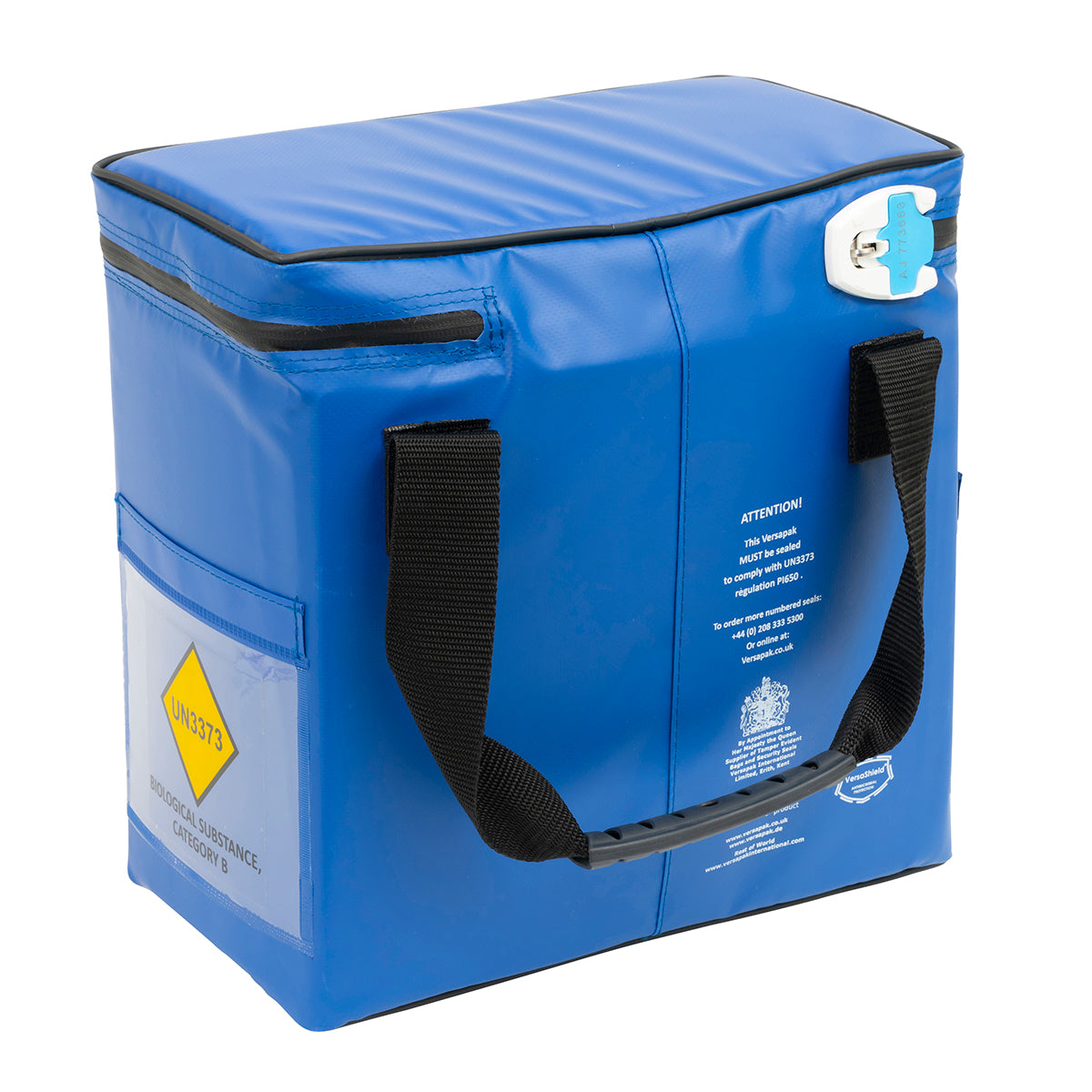
Packing Instruction 650 requirement
“Packagings shall be constructed and closed to prevent any loss of contents that might be caused under normal conditions of transport by vibration or by changes in temperature, humidity or pressure.”
A heavy duty zip closure keeps the lid of the bag in place. A tamper evident locking house can be locked with a Versapak seal – this seal prevents the bag from being accidentally or covertly opened.
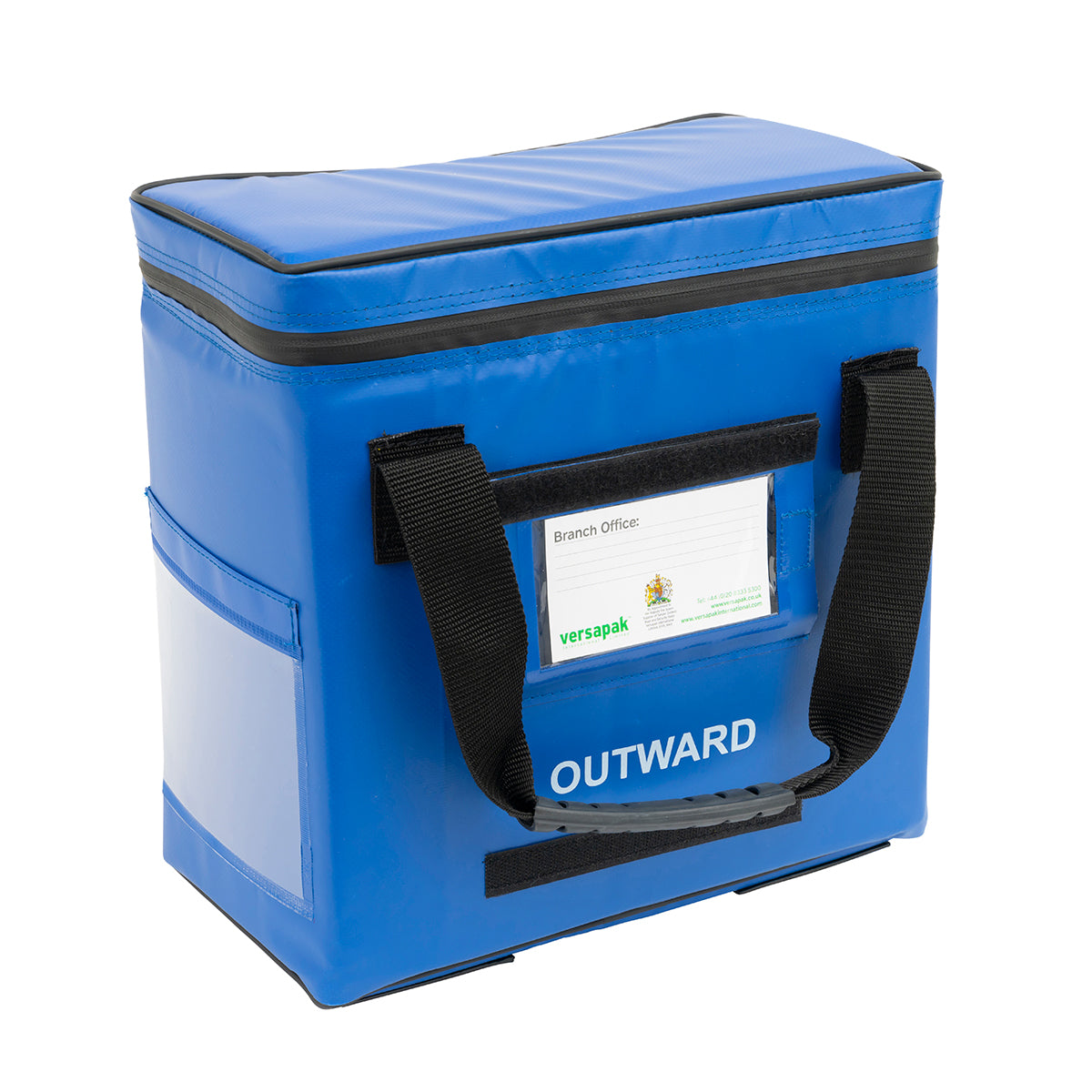
Packing Instruction 650 requirement
“The packaging shall consist of at least three components:
(a) A primary receptacle
(b) A secondary packaging
(c) An outer packaging”
The Versapak medical transport bag is the outer packaging. We also supply a leakproof secondary packaging.
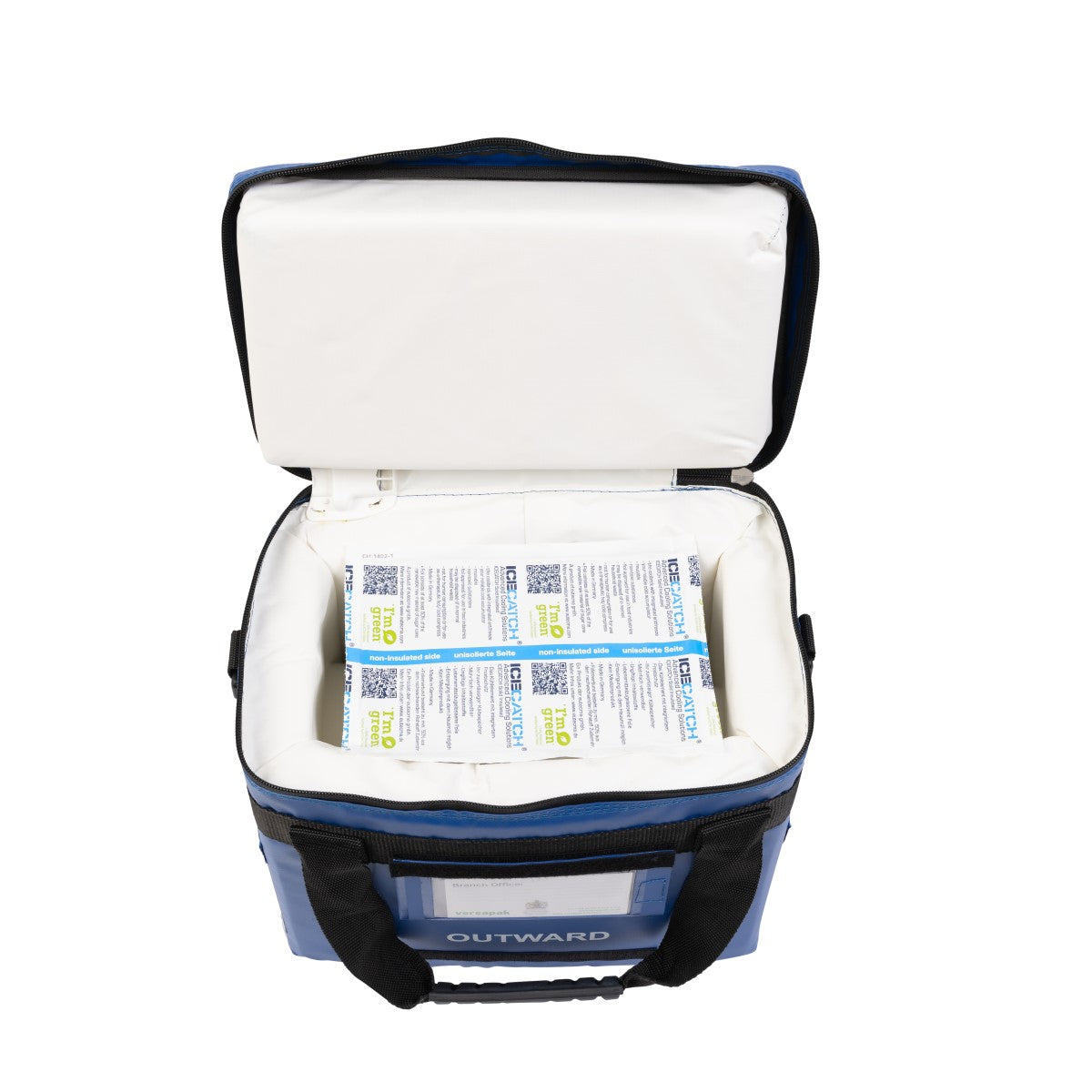
Packing Instruction 650 requirement
“…of which either the secondary or the outer packaging shall be rigid.”
“Secondary packagings shall be secured in outer packagings with suitable cushioning material.”
“Any leakage of the contents shall not compromise the integrity of the cushioning material or of the outer packaging.”
Integrated within the Versapak medical bag is a stiffener which keeps the bag rigid at all times. The stiffener is cushioned within a soft outer which protects the contents and helps the user experience. The stiffener, cushioning and outer material is constructed so that any contact with liquid will not compromise its integrity.
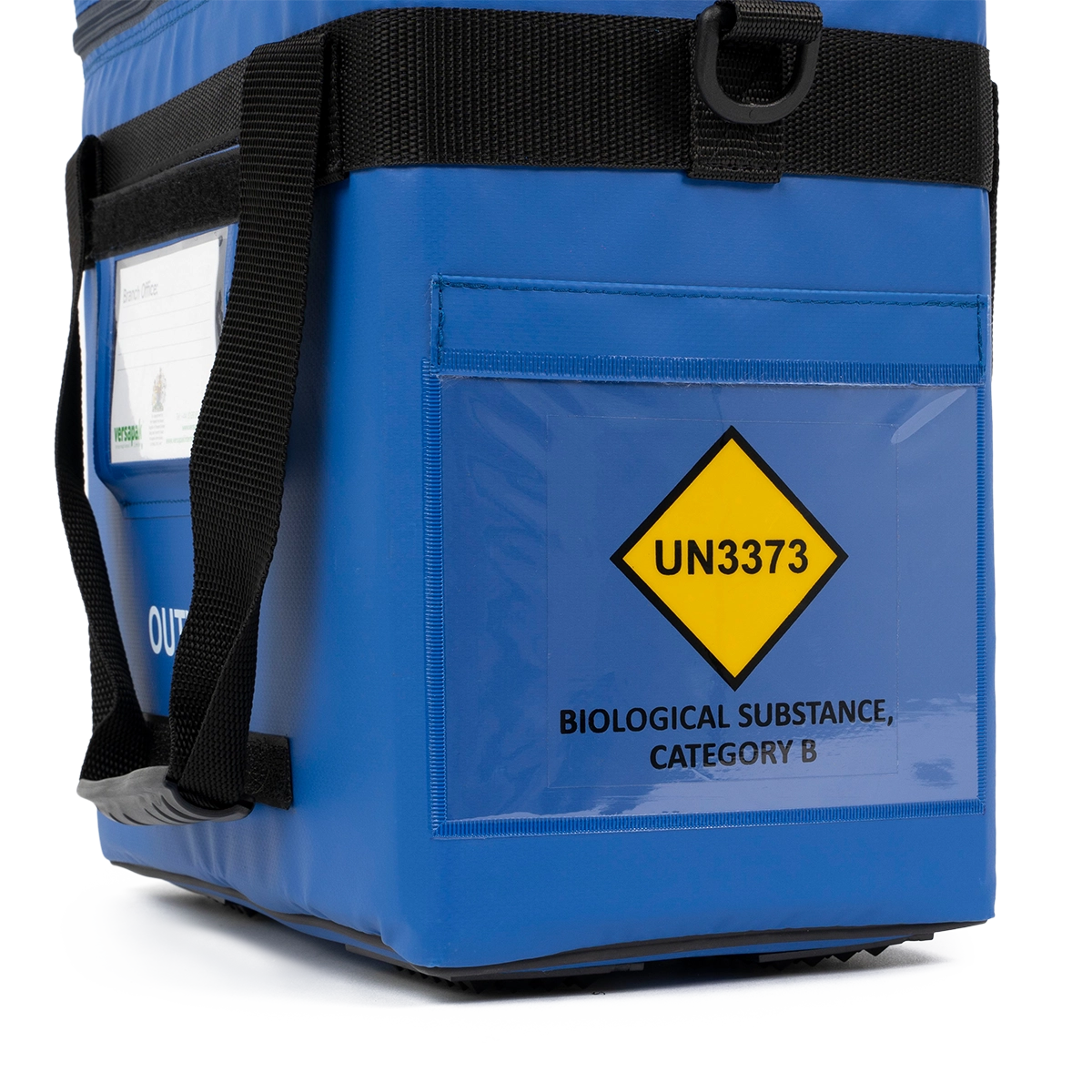
Packing Instruction 650 requirement
“For transport, the mark illustrated below shall be displayed …"
“The proper shipping name “BIOLOGICAL SUBSTANCE, CATEGORY B” in letters at least 6 mm high shall be marked on the outer packaging adjacent to the diamond-shaped mark.”
An A5 window on the side of the bag is printed with the UN3373 logo. Inside the window, a white card provides a contrasting background and is printed with the appropriate text.
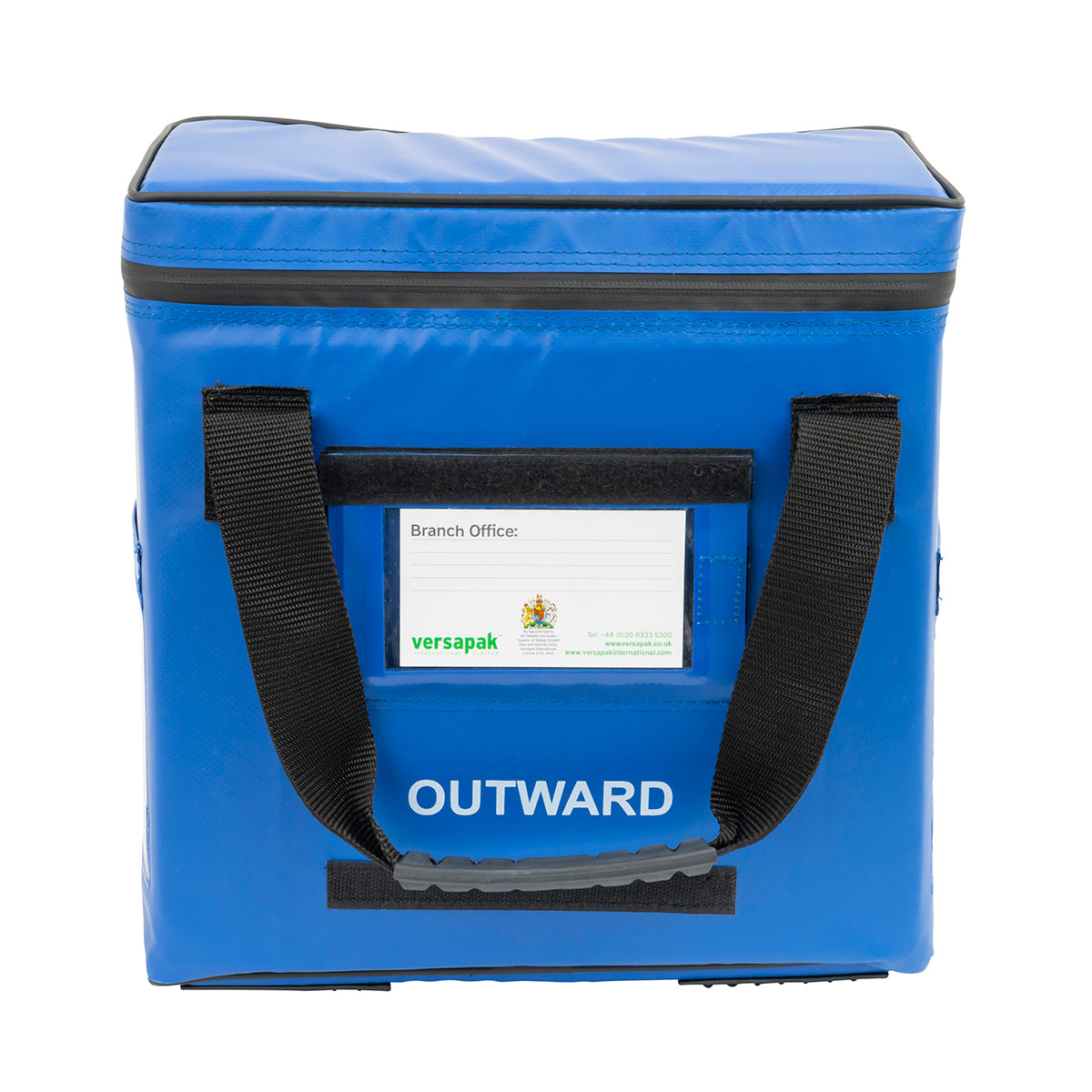
Packing Instruction 650 requirement
“At least one surface of the outer packaging shall have a minimum dimension of 100x100mm.”
The smallest of Versapak’s diagnostic substance carriers is 305x170x305mm.
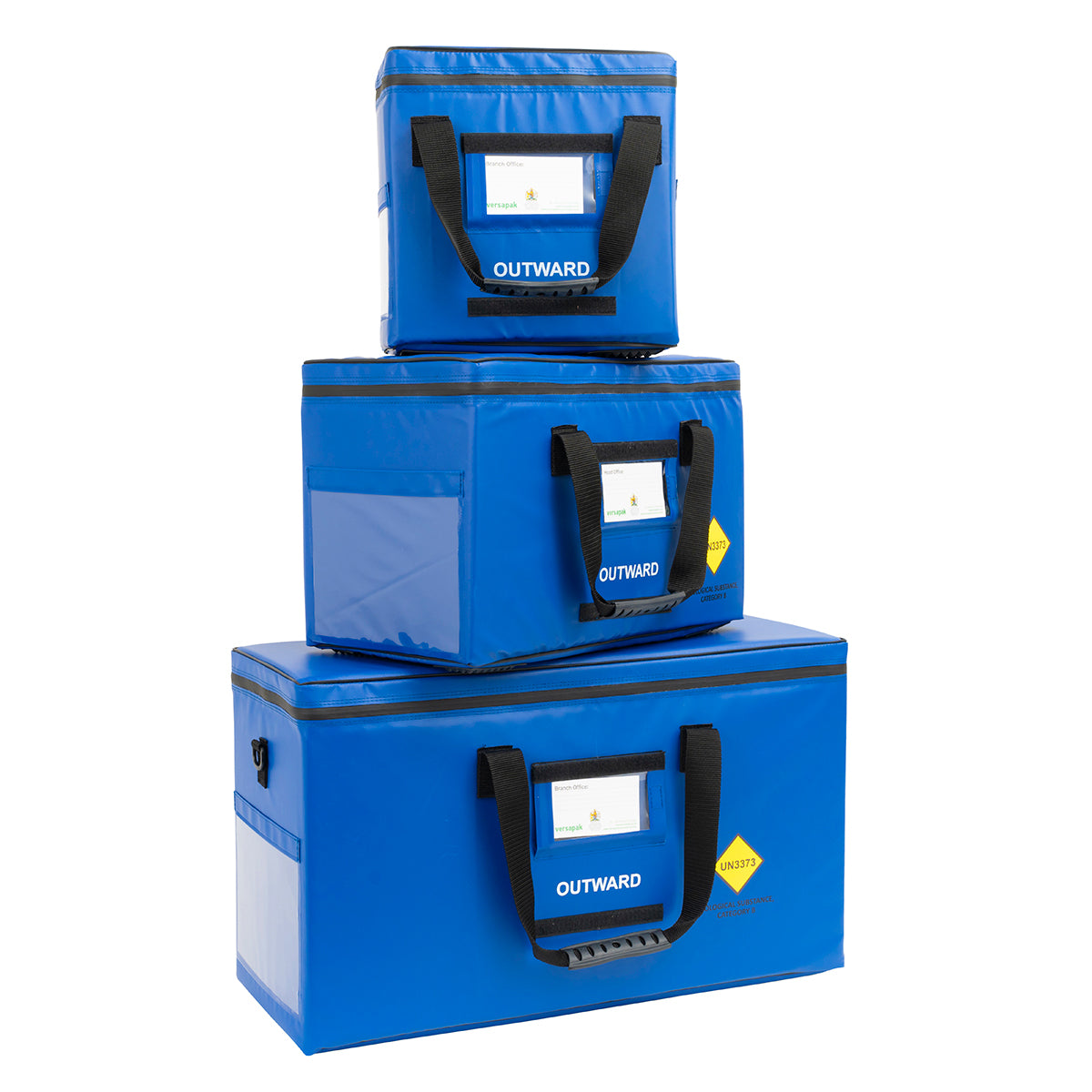
Packing Instruction 650 requirement
“The completed package shall be capable of successfully passing the drop test in 6.3.5.3 as specified in 6.3.5.2 of these Regulations at a height of 1.2m.”
The Versapak diagnostic substance carriers have been independently tested and certified to pass a 1.2m drop test according to these Regulations.
Click here for the test results.
Primary, Inner and Outer Packaging
A Versapak medical carrier forms the outer packaging of the UN3373 biological substance category compliance. A primary receptacle is required and usually dictated by the laboratory. We supply Versapak Medical Carriers in small (6 litre), medium (18 litre) and large (35 litre) internal capacities to suit most laboratory and medical requirements. Anti-spillage liners make-up the inner packaging and are also supplied in small, medium and large sizes to suit carriers. Fastening clips are applied to the liners, preventing issues with samples leaking inside the outer packaging when used with our absorbent pads.
Please click here to find out more about the Primary, Secondary and Tertiary packaging requirements or contact us for more information.
See all approved UN3373 carriers from Versapak:
UN3373 Medical Carriers






